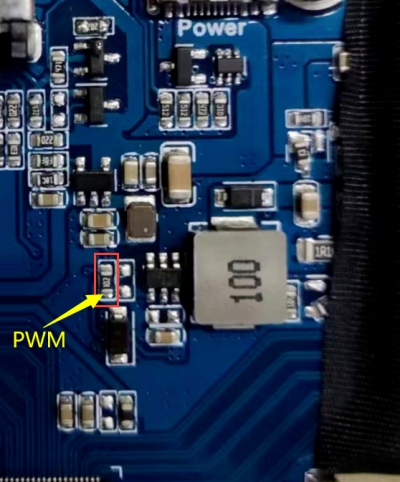Waveshare 9.3 inch LCD Capacitive Touch Display High Brightness
Product Link
Introduction
The 9.3-inch 1600x600 LCD is a small, high-resolution universal capacitive touch screen compatible with most standard HDMI devices. Featuring a small, thin body, toughened glass panel, excellent display performance, and smooth multi-touch effect. The baseboard comes with its own fixing nuts for integrated projects.
Feature
9.3-inch IPS screen with 1600x600 hardware resolution.
10-point capacitive touch with up to 6H hardness toughened glass panel.
Optical bonding technique for better display.
Supports Raspberry Pi OS/Ubuntu/Kali and Retropie when used with Raspberry Pi.
Supports Windows 11/10/8.1/8/7 when used as a computer monitor.
Multi-language OSD menu support (can be used for power control, adjusting brightness/contrast, etc.)
Supports HDMI audio output, onboard 3.5mm headphone jack, and 4PIN header.
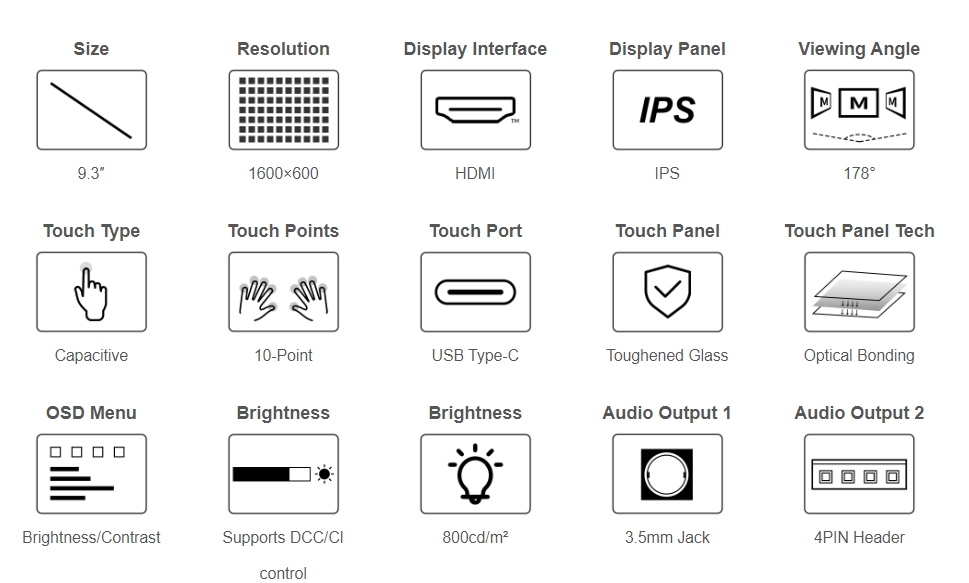
Specification
Model
9.3inch 1600 × 600 LCD
/
Dimensions
9.3
Inch
Viewing angle
178
Deg
Resolution
1600x600
Pixels
Touch screen dimensions
239.00(H) × 94.00(V) × 1.45(D)
mm
Display screen dimensions
231.00(H) × 89.00(V) × 4.6(D)
mm
Display area
221.18(H) × 82.94(V)
mm
Pixel pitch
0.04608(H) × 0.13824(V)
mm
Color gamut
51%
NTSC
Brightness (Max)
800
cd/m²
Contrast
1200
/
Backlight
OSD menu dimming
/
Refresh rate
60
Hz
Display interface
Standard HDMI port
/
Power port
5V Type-C interface
/
Power consumption
4.2
Watt
Weight
280
g
Electrical Parameters
Input Voltage
4.75
5.00
5.25
V
Note 1
Input Current
800
850
TBD
mA
Note 2
Operating Temperature
0
25
60
℃
Note 3
Storage Temperature
-10
25
70
℃
Note 3
•Note 1: Input voltage exceeding the maximum value or improper operation may cause permanent damage to the device. •Note 2: The input current should be ≥800mA, otherwise, it will lead to start-up failure or abnormal display, and a long time in an abnormal state may cause permanent damage to the device. •Note 3: Please do not put the display in a high-temperature and high-humidity storage environment for a long time, the display needs to work within the limit value, otherwise it will be possible to damage the display.
EDID Sequence Parameters
If the system of the main control board can automatically identify the EDID for display, there is no need to set the relevant timing parameters additionally.
Otherwise, you can refer to the following EDID settings:
71.00
1600
260
600
36
130
32
10
10
220
89
0
0
Onboard Interface
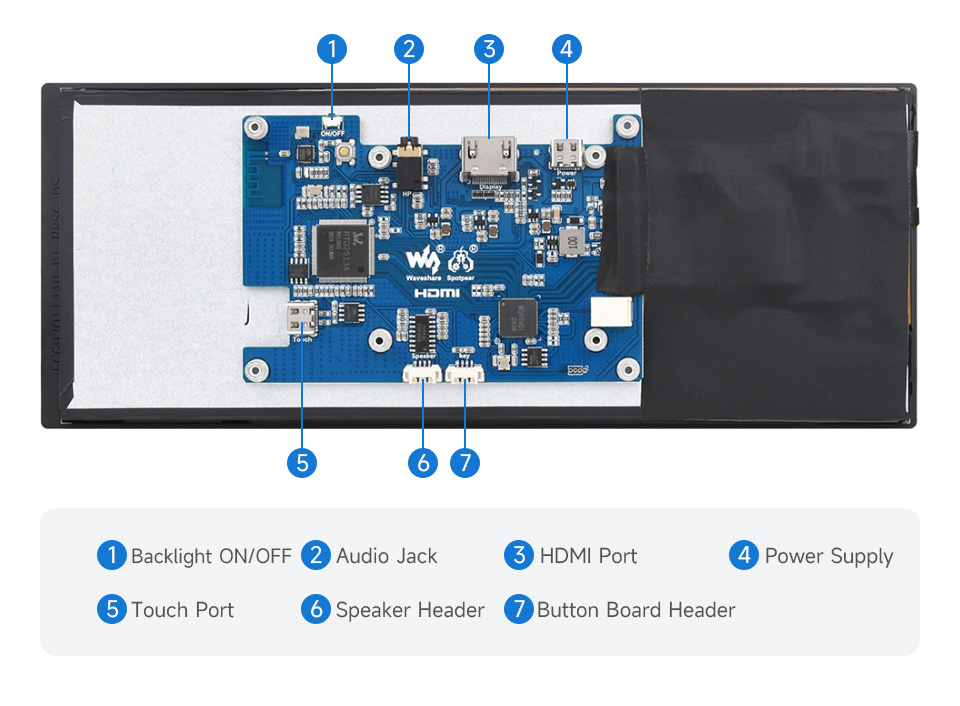
User Manual
Working with Raspberry Pi
Hardware Connection
Connect the Touch port to the USB interface of the Raspberry Pi.
Connect the HDMI port to the Raspberry Pi HDMI port.
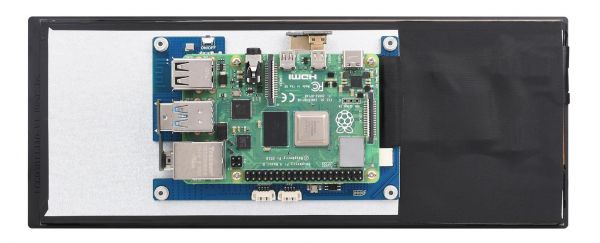
Software Setting
1. Please download the newest image from the Official Raspberry Pi website. 2. Download the compressed file on the PC and unzip it to get the .img file. 3. Connect the TF card to the PC and use SDFormatter to format the TF card. 4. Open Win32DiskImager, choose the image prepared in the first step, and click "Write" to write the system image. 5. After programming, open the config.txt file in the root directory of the TF card and enter the following codes at the end of config.txt. Then, save and safely eject the TF card.
6. Insert the TF card into the Raspberry Pi, power on the Raspberry Pi, wait for a few seconds normally, and then it will display normally.
Linux Software Brightness Adjustment
Using the DDC/CI program, here is an example of the ddcutil tool.
For more information about ddcutil function commands, please click here.
Working with PC
Support Windows 11/10/8.1/8/7
How to use:
Connect the Touch port of the LCD to the USB interface of the PC, and Windows will automatically recognize the touch function.
Connect the HDMI interface of the LCD to the HDMI interface of the PC, and Windows will automatically recognize the display function.
Note:
Some PCs do not support HDMI devices plug-and-play, usually after rebooting the system can be used normally.
If the power supply of the USB interface is insufficient, the LCD will flicker, after connecting the external 5V 1A power adapter to the LCD's Power interface, it can be restored to normal use.
Windows Touch Calibration
Take Windows 10 as an example:
1. Enter the Windows setting of the system, type in the search bar, and click "Calibrate the screen for pen or touch input" (as shown in the picture below):

2. Click "Setup" in the pop-up "Tablet PC Settings" interface:
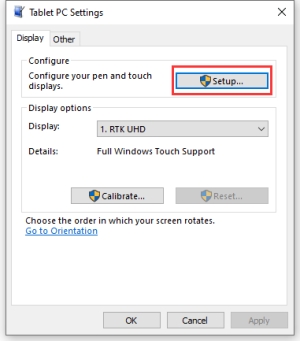
3. The following text prompt will appear on the screen. Please tap the touch screen with your finger, and the computer will recognize it as a touch screen.
【Note】If the touch screen is blank, press the "Enter" key, and the text prompt will switch to the touch screen. (The screen which displays the text prompt will be used as a touch screen!)

Windows Software Brightness Adjustment
1. Download and install DDC/CI applications, such as the open-source Twinkle Tray.
2. Open the software dimming icon, it will recognize the Waveshare monitor and adjust the monitor backlight brightness by sliding the scroll bar.
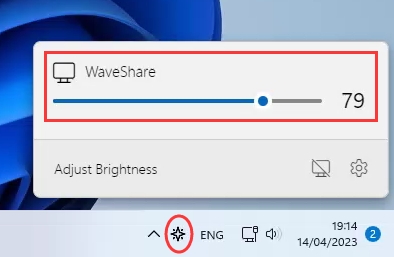
3. You can also enter the DDC/CI application settings screen to enable contrast adjustment, volume adjustment, and other functions.
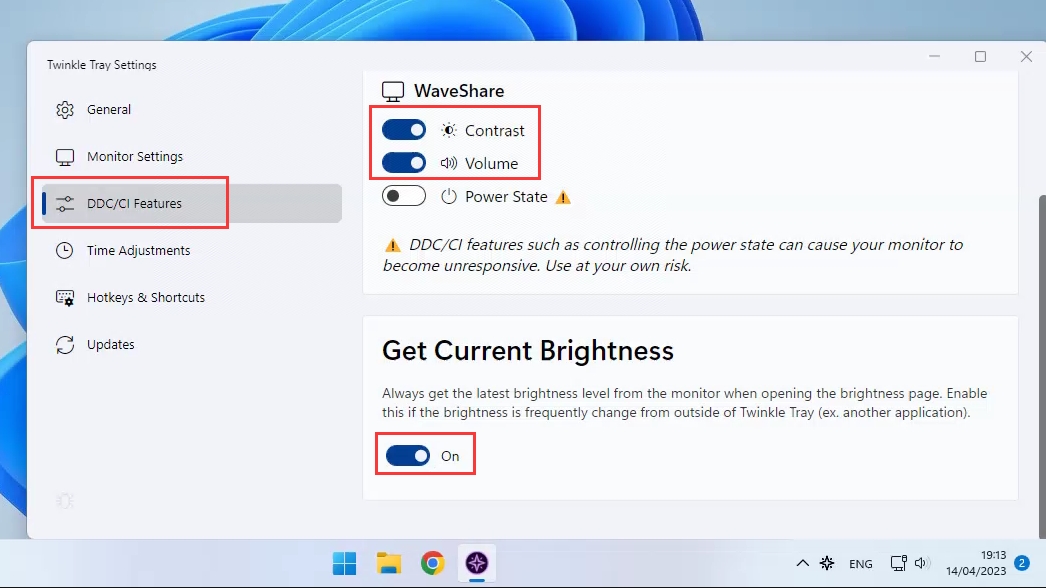
Dimensions
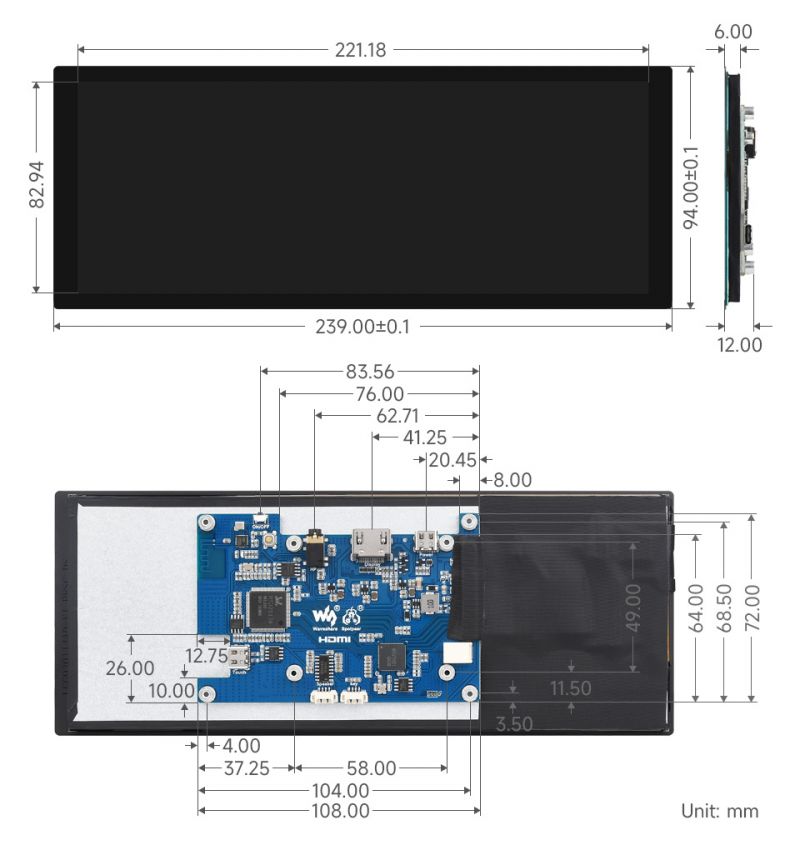
Resource
FAQ
Last updated
Was this helpful?

